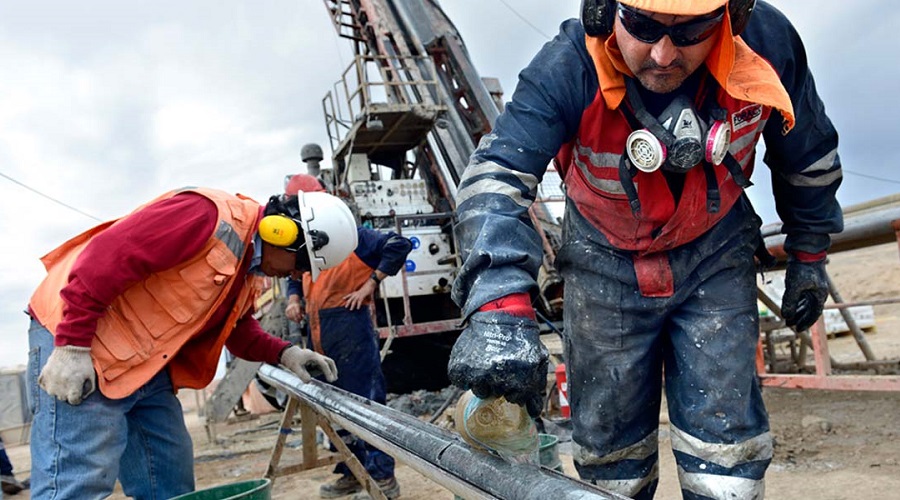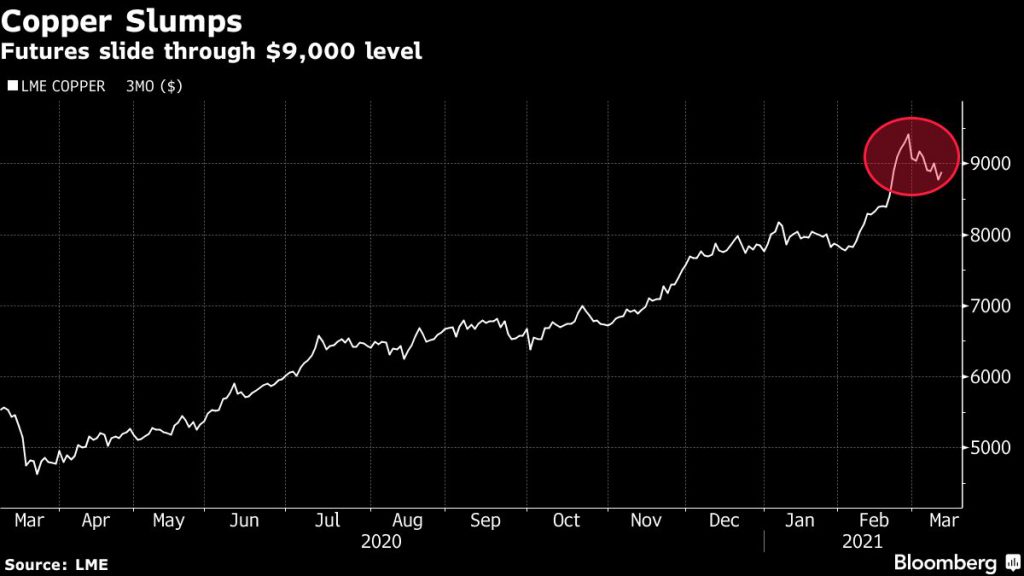
The official overseeing the world’s biggest copper industry isn’t losing any sleep over the recent pullback in prices, saying the underlying trend of rising demand remains intact despite hard-to-read daily market gyrations.
Copper surged to the highest in almost a decade last month on strong Chinese buying and as investors poured into commodities on the prospect that vaccinations and stimulus would unlock a sharp global recovery. Since then, futures have retreated about 6% as the dollar and bond yields rose.
“I don’t think there is one single cause behind that little drop in the price,” Chile’s Energy and Mining Minister Juan Carlos Jobet said when asked if he’d noticed any cooling in Chinese demand. “To be honest, I’m not giving a lot of attention to day-to-day movements in the price.”
“In the medium term, as renewable energy and electro-mobility agendas accelerate, the demand for copper will go up, and that is the most permanent trend,” Jobet said.

Speaking in an interview Wednesday, he said China’s pledge to be carbon neutral by 2060 and the change of government in the U.S. are among recent events that support copper demand growth, while suppliers are set to maintain their discipline after learning lessons in the last supercycle.
Copper rose 2.4% to $9,077.50 a ton on the London Metal Exchange as stocks climbed following a tame U.S. inflation report that kept Treasury yields and the dollar in check. Bolstering the demand outlook, President Joe Biden’s $1.9 trillion Covid-19 relief bill cleared its final congressional hurdle Wednesday.
“I’m seeing an industry that is moderately optimistic on the fundamentals, but they will not rush into investment decisions that have long-term implications because of a short-term change in the price,” the minister said.Play Video
Still, his government calculates $74 billion in projects in the pipeline over the next decade in Chile, a nation that accounts for more than a quarter of the world’s copper. That compares with a CRU Group estimate that the copper industry will need upwards of $100 billion in investments to meet projected demand growth by 2030 amid global electrification.
While a stronger-for-longer price scenario might make some high-cost projects more appealing to develop, that would be at the margins, Jobet said. “I don’t think companies will change those plans because of what’s happened to prices in the last couple of months.”
The industry’s ability to obtain permits to meet rising supply will depend largely on convincing stakeholders it’s doing enough in environmental, social and governance areas, he said. Mining companies are moving to renewable energy, using more seawater and taking some initial steps to replace diesel with green hydrogen or batteries.
“The challenge is to improve their relationship not just with local communities but to outline and draw in the minds of a broader population a vision of what mining will be in the future,” he said. “How do we explain to the broader population that Chilean copper is going to be essential for the world to be carbon neutral.”
For now, the Chilean industry is dealing with an increase in Covid-19 cases in mining areas. Last year, mines in the South American nation managed to maintain output through the pandemic and continue to do so this year, Jobet said.
One challenge for mining companies is to reduce infections when people aren’t working. Some operations, such as Codelco’s El Teniente mine, are making their facilities and medical teams available for local populations to get vaccinated, he said.
(By James Attwood, with assistance from Winnie Zhu)
Comments